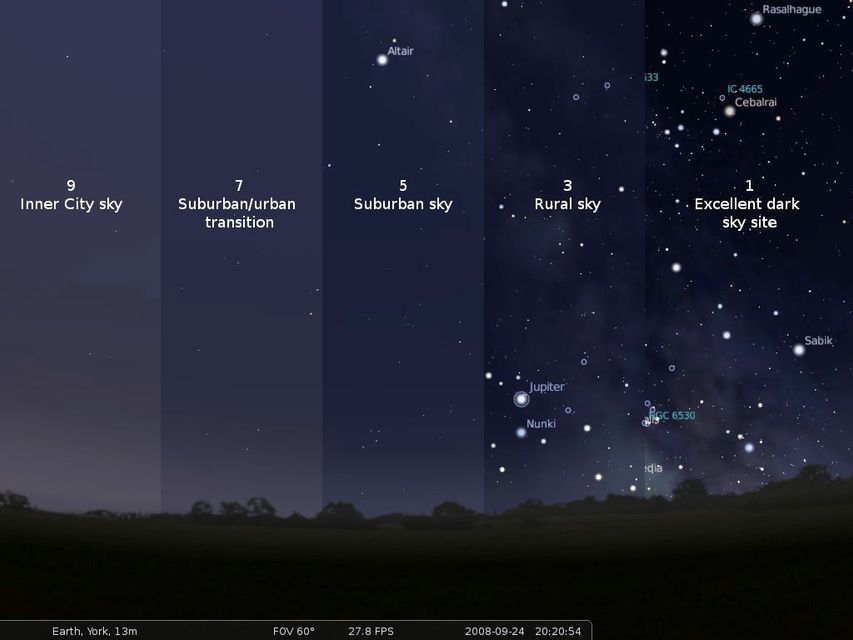
The Hidden Cost of Bright Nights: Understanding and Combatting Light Pollution
When we think about pollution, the first images that come to mind are often smog-filled cities, polluted rivers, and plastic-laden beaches. However, there's another form of pollution that, although less visible in the traditional sense, has profound effects on our environment, health, and quality of life—light pollution. Let's delve into specific aspects of light pollution and explore actionable steps to mitigate its impact.
Light pollution refers to the excessive or misdirected artificial light produced by human activities. It manifests in various forms, such as the brightening of the night sky over populated areas (skyglow), excessive brightness that causes visual discomfort (glare), unwanted or intrusive light spilling into areas where it is not needed (light trespass), and the bright, confusing groupings of light sources often found in urban settings (clutter).
Light pollution doesn't just rob us of the stars; it impacts our health, disrupts ecosystems, and wastes precious energy.
The Impact on Human Health
The impact of light pollution on human health is significant. Artificial light at night can interfere with our circadian rhythms, leading to sleep disorders. The blue light emitted by many electronic devices and LED lights is particularly disruptive. For instance, a study by the American Medical Association found that excessive exposure to blue-rich light at night can suppress melatonin production, making it harder to fall asleep and reducing sleep quality.
Poor sleep quality due to excessive light exposure can contribute to stress, anxiety, and depression. A survey by the National Sleep Foundation revealed that people living in areas with high levels of light pollution reported higher levels of sleep-related issues and lower overall life satisfaction. There is also growing evidence that light pollution may be linked to serious health problems, including obesity, diabetes, and certain cancers. This is thought to be due to the disruption of hormone production, particularly melatonin, which plays a critical role in regulating sleep and protecting against disease. For example, the International Agency for Research on Cancer has classified night shift work, which involves exposure to artificial light at night, as a probable carcinogen.
Environmental Consequences
The natural world is equally affected by light pollution, often with devastating consequences. Many species rely on natural light cycles for their behavioral patterns. Sea turtles, for example, use moonlight to navigate to the ocean after hatching. Artificial light can disorient them, leading to increased mortality rates. In Florida, efforts to reduce beachfront lighting during turtle hatching season have shown significant improvements in hatchling survival rates.
Light pollution can disrupt the food chain as well. For example, nocturnal insects, which are attracted to artificial lights, can be drawn away from their natural habitats, affecting the species that rely on them for food. A study in the journal Biological Conservation found that artificial lighting can reduce insect populations by up to 50%, impacting birds and other animals that feed on insects. Additionally, inefficient lighting wastes a significant amount of energy, contributing to unnecessary carbon emissions and climate change. The International Dark-Sky Association estimates that about 30% of outdoor lighting in the U.S. is wasted, costing billions of dollars annually and resulting in the release of millions of tons of CO2.
Losing Our Astronomical Heritage
Beyond the practical consequences, light pollution robs us of the simple, profound joy of looking up at the night sky and seeing the stars. This loss is not just aesthetic but cultural and educational. The night sky has inspired countless generations of scientists, philosophers, artists, and dreamers. In regions like Mauna Kea in Hawaii and the Atacama Desert in Chile, efforts to limit light pollution have preserved the skies for astronomical research and tourism, benefiting local economies and communities.
What Can We Do?
Addressing light pollution requires concerted effort from individuals, communities, and policymakers. One effective approach is to adopt smart lighting solutions. This includes using energy-efficient, low-glare lighting that directs light downward where it is needed. Implementing timers, dimmers, and motion sensors can also reduce unnecessary lighting. For instance, cities like Tucson, Arizona, have successfully reduced light pollution by switching to shielded, low-glare streetlights.
Protecting dark sky areas is another crucial step. Supporting the designation of dark sky parks and reserves where natural darkness can be preserved and enjoyed has proven beneficial. The International Dark-Sky Association has designated several such areas globally, providing pristine environments for stargazing and wildlife conservation.
Raising awareness about the importance of reducing light pollution is vital. Educating others and promoting responsible outdoor lighting practices among homeowners, businesses, and municipalities can make a significant difference. Campaigns like "Lights Out" in Chicago have helped reduce bird fatalities during migration seasons by encouraging building owners to turn off unnecessary lights.
Supporting research and innovation in the field is also essential. Advocating for funding into the study of light pollution and the development of innovative solutions can lead to significant advancements. Encouraging new technologies that reduce light pollution, such as advanced LED fixtures that minimize blue light emissions, can make a substantial difference.
By taking these steps, we can help to mitigate the effects of light pollution, improve our health, protect the environment, and restore the beauty of our night skies. Let’s work together to bring back the stars and create a brighter future in the most natural way possible.

Sarah Mitchell Reply
Great post, this really opened my eyes to the hidden impact of light pollution!